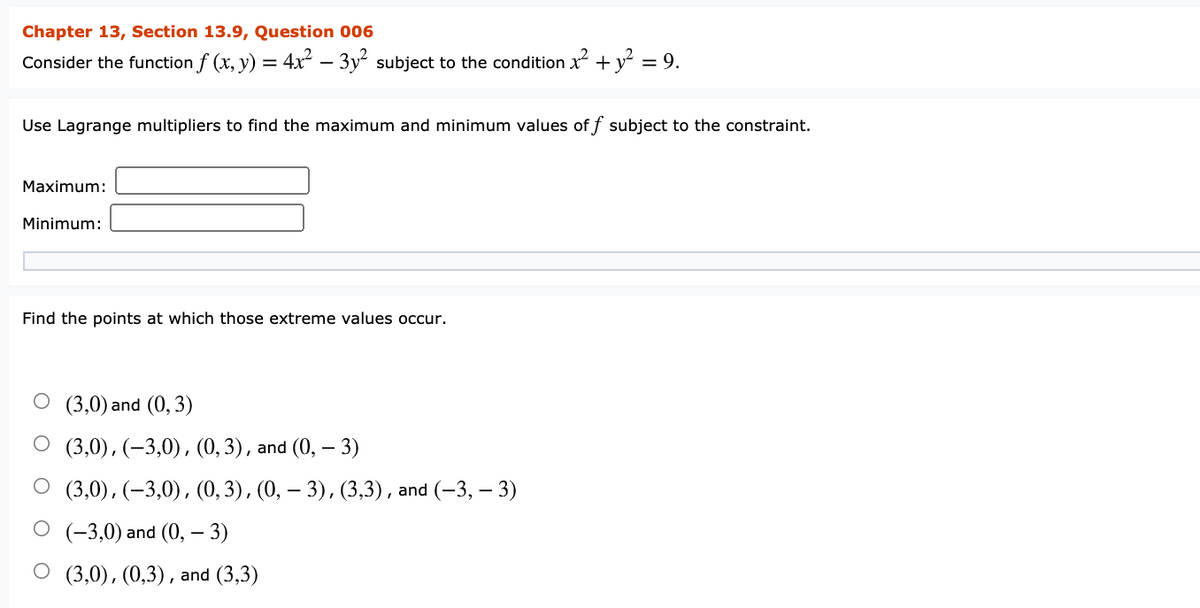Chapter 13, Section 13.9, Question 006 Consider the function f (x, y) = 4.x² – 3y² subject to the condition x² +y² = 9. Use Lagrange multipliers to find the maximum and minimum values of f subject to the constraint. Maximum: Minimum: Find the points at which those extreme values occur. O (3,0) and (0, 3) O (3,0),(-3,0), (0, 3), and (0, – 3) O (3,0), (–3,0), (0, 3), (0, – 3), (3,3), and (-3, – 3) O (-3,0) and (0, – 3) O (3,0), (0,3), and (3,3)
Chapter 13, Section 13.9, Question 006 Consider the function f (x, y) = 4.x² – 3y² subject to the condition x² +y² = 9. Use Lagrange multipliers to find the maximum and minimum values of f subject to the constraint. Maximum: Minimum: Find the points at which those extreme values occur. O (3,0) and (0, 3) O (3,0),(-3,0), (0, 3), and (0, – 3) O (3,0), (–3,0), (0, 3), (0, – 3), (3,3), and (-3, – 3) O (-3,0) and (0, – 3) O (3,0), (0,3), and (3,3)
Linear Algebra: A Modern Introduction
4th Edition
ISBN:9781285463247
Author:David Poole
Publisher:David Poole
Chapter2: Systems Of Linear Equations
Section2.4: Applications
Problem 17EQ
Related questions
Question

Transcribed Image Text:Chapter 13, Section 13.9, Question 006
Consider the function f (x, y) = 4x – 3y subject to the condition x +y° =
= 9.
Use Lagrange multipliers to find the maximum and minimum values off subject to the constraint.
Maximum:
Minimum:
Find the points at which those extreme values occur.
O (3,0) and (0,3)
(3,0), (–3,0), (0,3), and (0, – 3)
(3,0), (–3,0), (0,3), (0, – 3), (3,3), and (-3, – 3)
(-3,0) and (0, – 3)
О (3,0), (0,3), and (3,3)
Expert Solution
This question has been solved!
Explore an expertly crafted, step-by-step solution for a thorough understanding of key concepts.
Step by step
Solved in 3 steps with 2 images

Recommended textbooks for you

Linear Algebra: A Modern Introduction
Algebra
ISBN:
9781285463247
Author:
David Poole
Publisher:
Cengage Learning

Algebra & Trigonometry with Analytic Geometry
Algebra
ISBN:
9781133382119
Author:
Swokowski
Publisher:
Cengage

Linear Algebra: A Modern Introduction
Algebra
ISBN:
9781285463247
Author:
David Poole
Publisher:
Cengage Learning

Algebra & Trigonometry with Analytic Geometry
Algebra
ISBN:
9781133382119
Author:
Swokowski
Publisher:
Cengage